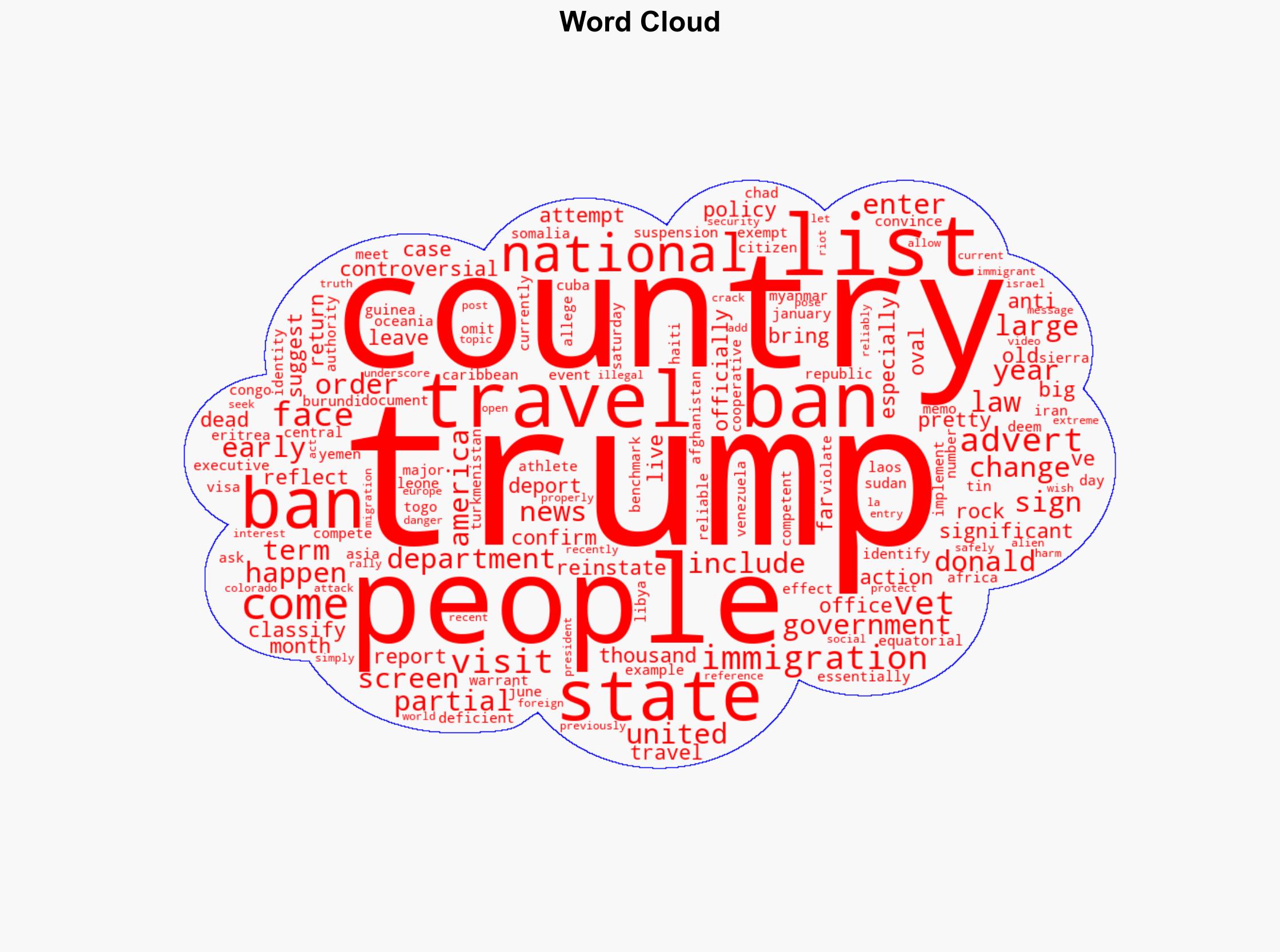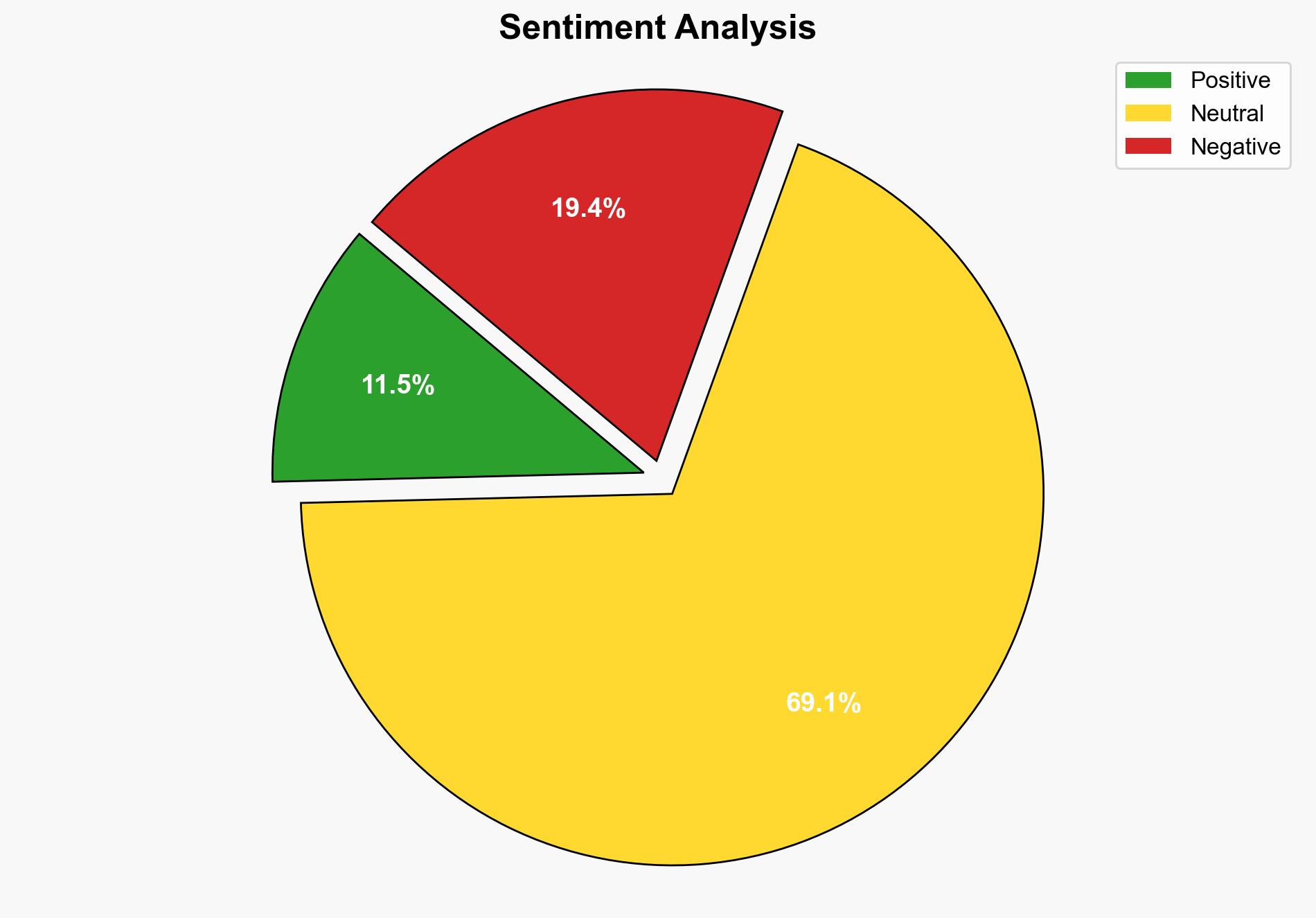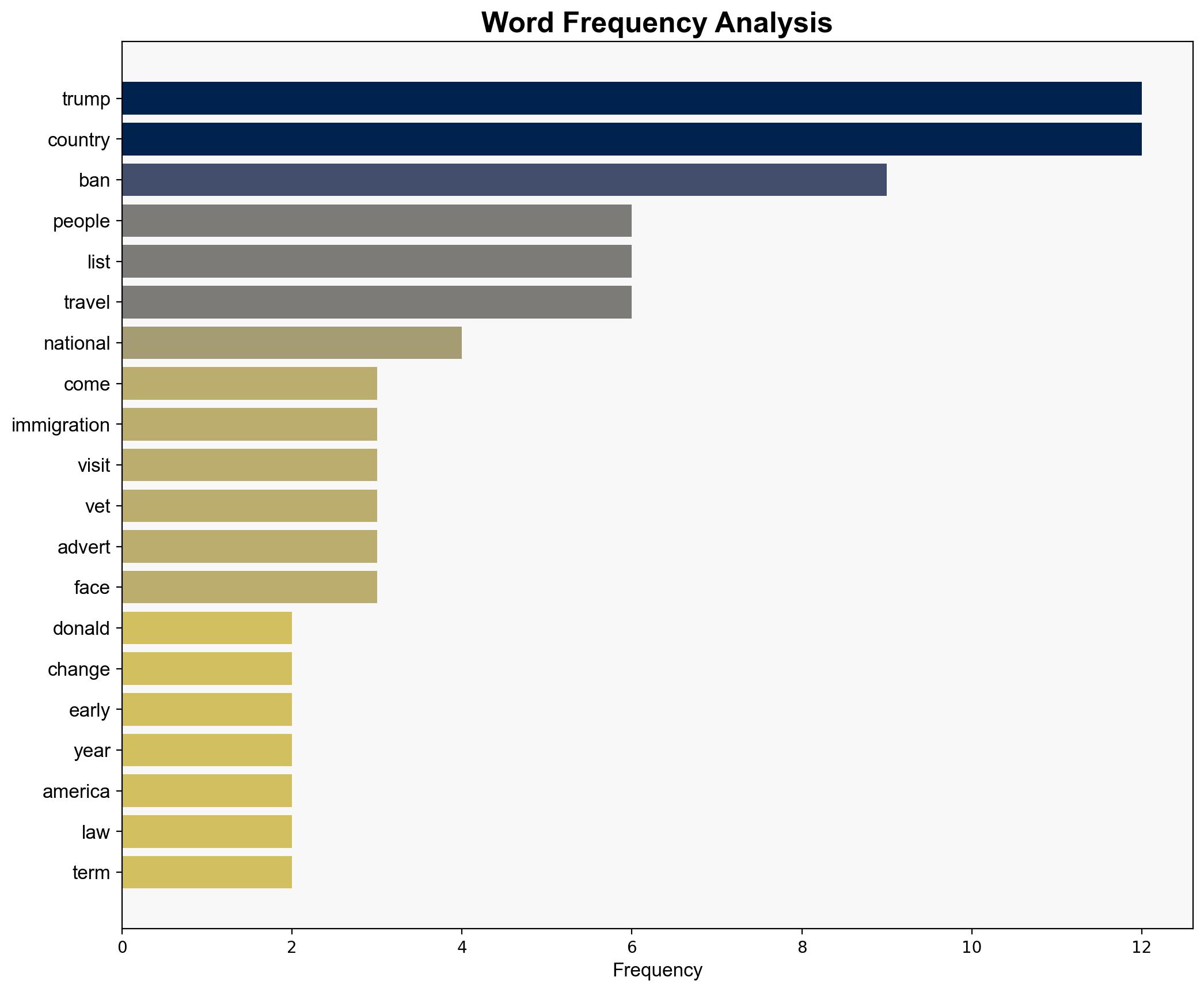Why Donald Trump has implemented travel ban as president ‘considers adding another 36 countries’ to list – LADbible
Published on: 2025-06-15
Intelligence Report: Why Donald Trump has implemented travel ban as president ‘considers adding another 36 countries’ to list – LADbible
1. BLUF (Bottom Line Up Front)
The report examines the strategic rationale behind Donald Trump’s decision to implement a travel ban and the potential expansion to include an additional 36 countries. The primary objective is to enhance national security by mitigating risks associated with inadequate vetting processes in certain countries. Recommendations include strengthening diplomatic engagements and refining intelligence-sharing mechanisms to address underlying security concerns.
2. Detailed Analysis
The following structured analytic techniques have been applied to ensure methodological consistency:
Causal Layered Analysis (CLA)
The surface event is the implementation of the travel ban. Systemic structures involve immigration policies and international relations. The worldview reflects a focus on national security and sovereignty. The underlying myth is the belief in protecting domestic interests from external threats.
Cross-Impact Simulation
The travel ban may strain diplomatic relations with affected countries, potentially impacting trade and cooperation on global issues. Neighboring states could experience increased migration pressures, leading to regional instability.
Scenario Generation
Scenarios include:
- Best Case: Enhanced cooperation with affected countries leads to improved vetting processes and reduced security threats.
- Worst Case: Diplomatic fallout results in economic sanctions and increased anti-American sentiment.
- Most Likely: Incremental improvements in security protocols with moderate diplomatic tensions.
3. Implications and Strategic Risks
The travel ban could exacerbate existing geopolitical tensions and contribute to economic disruptions. There is a risk of retaliatory measures from affected countries, potentially impacting global supply chains and international alliances. Cybersecurity threats may also increase as a form of asymmetric retaliation.
4. Recommendations and Outlook
- Engage in diplomatic dialogues to address the root causes of inadequate vetting processes in affected countries.
- Enhance intelligence-sharing frameworks to improve threat detection and response capabilities.
- Monitor regional developments to anticipate and mitigate potential retaliatory actions.
5. Key Individuals and Entities
Donald Trump
6. Thematic Tags
national security threats, cybersecurity, counter-terrorism, regional focus





